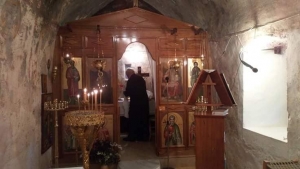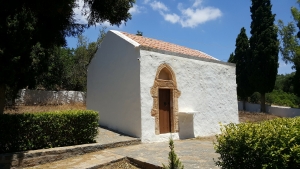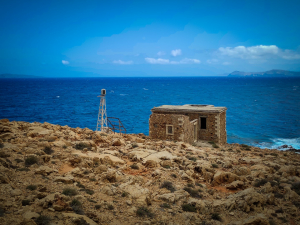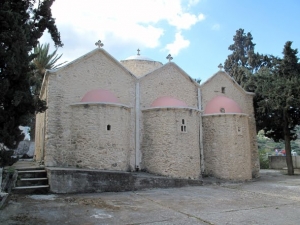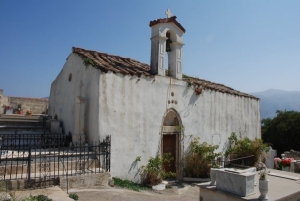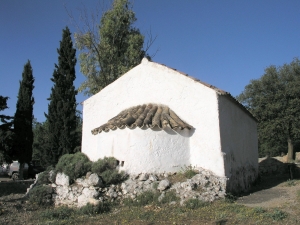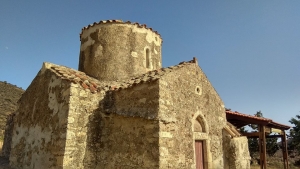Ο ναός του Αγίου Ιωάννη του Χρυσόστομου βρίσκεται μέσα στον οικισμό της Σαρακήνας Σελίνου. Είναι μικρός μονόχωρος καμαροσκέπαστος και φέρει στο εσωτερικό του τοιχογραφικό διάκοσμο που έχει υποστεί σχεδόν ολοκληρωτική καταστροφή.
Το Πάρκο Γεωργιάδη αποτελεί το μεγαλύτερο χώρο πρασίνου μέσα στην πόλη του Ηρακλείου με έκταση 17 στρέμματα. Έχει διαμορφωθεί πάνω από την τάφρο, δίπλα στα Ενετικά Τείχη.
Just outside the village of Lakonia near Agios Nikolaos we meet the small single-nave arched temple dedicated to Archangel Michael. The church interior retains excellent murals from 1431 and 1432.
Ο φάρος της Σητείας, γνωστός κι ως Έξω Φανάρι, βρίσκεται στο ακρωτήριο της Βαμβακιάς. Ανήκει στο δίκτυο των φάρων που έκτισε η Γαλλική Εταιρία Φάρων στο τέλος του 19ου αιώνα και τέθηκε σε λειτουργία το 1892.
The imposing three-aisled church of Saint John the Theologian (Agios Ioannis) in Mesa Mouliana is located at the edge of the village and is the result of successive interventions in the original medieval Byzantine single-aisled church. .
In the cemetery of the village of Nefs Amari in the province of Amari there is the small single-nave arched temple of the Archangels (Taxiarches). The temple is dated to the Venetian occupation and above the entrance, on the exterior wall, there is a cross-shape series of round ceramics (pinakia) preserved.
The church of Saint John the Theologian (Agios Ioannis Theologos) is located in the ruined settlement of Lakki, in the periphery of the village Kroustas. The temple was built on a pre-existing building, and nearby are traces of buildings from the Lakkos settlement, two threshing floors and a cistern.
The church of Panagia Gorgoepikoos is located at the territory of the village Pigaidakia, near the beginning of the stream that ends on Karavovrissi beach in Kali Limenes. Today only the temple is preserved from the complex that till the beginning of the 20th century was a small monastery.











